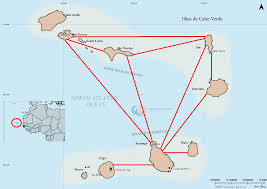Exploring Cabo Verde: A Unique Island Destination

Introduction
Cabo Verde, an archipelago located off the northwest coast of Africa, has increasingly gained recognition as a prime travel destination. Known for its stunning landscapes, rich cultural heritage, and warm climate, this island nation appeals to tourists seeking both relaxation and adventure. Its significance is rising not only in terms of tourism but also in geopolitics, sustainability, and biodiversity.
Geographical Characteristics
Cabo Verde consists of ten volcanic islands and several islets, each offering unique features. The larger islands such as Santiago, the largest island, are characterised by vast mountains and lush valleys, while others like Sal and Boa Vista are renowned for their beautiful beaches and ideal conditions for water sports. Due to its strategic location along transatlantic shipping routes, Cabo Verde has historically served as a meeting point for different cultures and trade flows.
Tourism Impact
In recent years, tourism in Cabo Verde has seen significant growth, contributing substantially to the national economy. The government has made concerted efforts to promote the islands as a sustainable and attractive holiday destination. In 2022, tourist arrivals increased by over 30% compared to the previous year, with visitors drawn by the islands’ natural beauty and cultural festivals such as the Carnival of Mindelo. The growing visitor numbers have encouraged investment in hospitality and infrastructure, making it easier for tourists to experience everything Cabo Verde has to offer.
Cultural Significance
The rich cultural tapestry of Cabo Verde is woven from African, Portuguese, and other influences that have been in dialogue for centuries. Music plays a central role in national identity, with genres like Morna and Coladeira capturing the islands’ emotional depth and history. Celebrations, particularly during festivals, showcase the vibrant customs and traditions such as traditional dances and culinary delights, drawing interest from both local and international audiences.
Environmental Considerations
While the growth of tourism presents economic opportunities, it also raises concerns about environmental sustainability. Cabo Verde is particularly vulnerable to climate change due to its small landmass and water scarcity. The government’s initiatives to promote eco-friendly practices, such as sustainable tourism and renewable energy projects, aim to balance development with environmental preservation.
Conclusion
Cabo Verde represents a dynamic fusion of natural beauty, culture, and emerging economic potential. As the country continues to develop its tourist offerings while navigating challenges like climate change, it stands as a compelling case study in conservation and sustainable growth. For travellers and stakeholders alike, the future of Cabo Verde holds promise for continued exploration and appreciation of its uniqueness.









